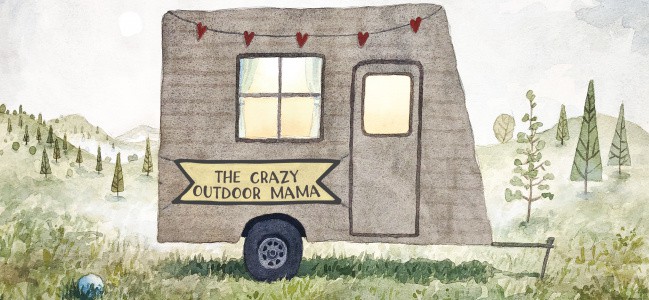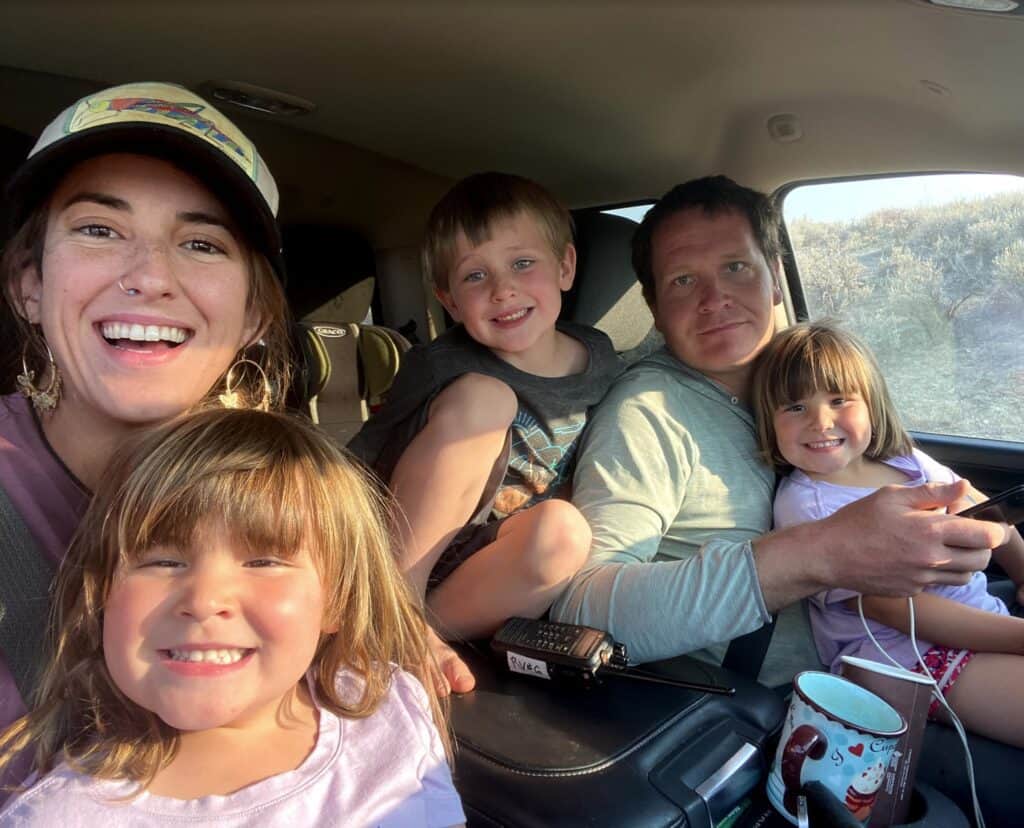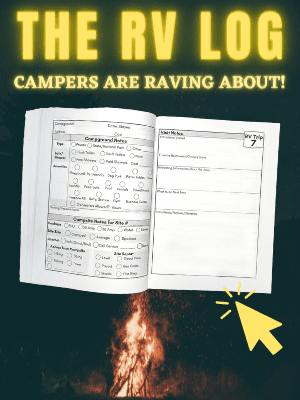If you love to backpack and want an efficient way to cook without the hassle of fuel canisters, you’ll LOVE the Solo Stove Lite.
Yes, it’s true. Fuel canister stoves are faster.
And it’s also true that some canister stoves are smaller.
So does the Solo Stove Lite still deserve a place in your backpack? Is it really worth it?
You might be surprised at what this little wood-burning stove is capable of…I KNOW I was! So I want to share my first-hand experience with the Solo Stove Lite. And let me tell you…I wasn’t easy on it.
Here’s what I’ll show you:
- What’s all the hype with the Solo Stove Lite?
- Solo Stove Lite pros and cons
- How long does it take to boil water?
- How long does it take to fry an egg in a cast-iron skillet? (With a video!)
- And a bunch of other questions

Table of Contents
So What’s All the Hype With the Solo Stove Lite?
Hey that rhymes! 🤣
The Solo Stove Lite is a small wood-burning backpacking stove. But it’s not just a place to hold a pot over some burning sticks. Just like other Solo Stoves, the Lite is a gasifier stove.
What the heck’s a gasifier stove?
If you’re a geek and want the scientific answer, check out this article from energypedia.
For the rest of us…the Solo Stove Lite has a double-walled design. There are holes around the bottom and holes around the inside at the top (like you can see in the picture).
Air enters the bottom and fuels the fire with oxygen. The solid biomass (fancy name for sticks and leaves) gets converted into gases and vapors (a.k.a. smoke). As the smoke rises it meets extra oxygen that’s being channeled out through the holes in the top and is burned.
Basically, your fire is burning in two places. It’s burning the solid fuel as well as the gases produced by the initial combustion. Then the cooking ring (the piece that sits on top) continues to direct the flame upward towards your pot.
So what does all this mean for you?
- Hotter fire (cook faster)
- More efficient use of fuel (use fewer sticks to cook your food)
- Less smoke (no more teary eyes😥)
But probably like you, I’d already read all this about the Solo Stoves and was still a little skeptical. That’s why I had to try it out for myself. And I have to say…I was blown away!
I put it through two rigorous tests and it passed with flying colors. See more about those below!
But first, let’s take a quick look at the Solo Stove Lite’s features so you know exactly what you’re getting.
Want a bigger version that the whole family can sit around and enjoy (and that even doubles as a grill!)? Check out my Solo Stove Bonfire review to see if it really is worth the $$$.
Solo Stove Lite Features
Ok, so here are the main features of the Solo Stove Lite. For reference, with some of the features, I’ll compare it to the popular MSR PocketRocket backpacking stove.
Weight: The Solo Stove Lite weighs just 9 ounces. The tiny MSR PocketRocket stove weighs 2.6 ounces. But don’t forget, you have to add on the weight of the fuel canister. The smallest MSR Isopro fuel canister weighs 7.4 ounces when full.
That means the PocketRocket with a fuel canister weighs an ounce more than the Solo Stove Lite.
Size: The Solo Stove Lite has a diameter of 4.25 inches and a height of 3.8 inches. Add the cooking ring and its height goes to 5.7 inches.
For packing, the cooking ring flips upside down and fits inside the stove so it doesn’t affect its size when packed.
The smallest MSR Isopro canister has a diameter of 3.5 inches and a height of 2.7 inches. Add the foldable PocketRocket stove and it’ll take up about the same amount of space in your pack as the Solo Stove Lite.
Construction: Stainless steel construction and nichrome wire grate. The Solo Stove Lite comes in two pieces — the base and the cooking ring. (Plus it comes with a carrying bag.)
As mentioned above, it’s got a double-walled construction with specially designed vent holes to create a hot and efficient fire. The grate keeps the biomass off the bottom so there’s space for ash to settle without clogging up the airflow.
Cold Weather Cooking: If freezing weather doesn’t put a damper on your backpacking plans, you know how troublesome cooking on canister stoves can be in cold weather. Most canister stoves don’t work very well below 20F.
Fortunately, the Solo Stove Lite doesn’t have those problems so it’s a good choice to take on extra cold hikes.
Cooking Speed: The PocketRocket boasts a 1-liter boiling time of 3 minutes and 30 seconds. The popular JetBoil flash is a hair faster at 3 minutes and 20 seconds.
The Solo Stove Lite definitely isn’t going to win this one. It’ll take about 8-10 minutes to boil a liter of water depending on the fuel. Expert users with extra dry fuel can shave a few minutes off that time. Not as fast as most canister stoves, but honestly, that’s still pretty fast.
Read all the reviews and check out more specs on the official Solo Stove Lite page.
Still a little skeptical? I was too! I have a 1-quart stainless steel Stanley french press that always seems to take FOREVER to boil on my gas stove. I figured that would be the ultimate test.
Wanna know how long it took the Solo Stove Lite to get it boiling? Keep reading!
Solo Stove Lite Review from a Real User
So now that we got past the standard specifications and stuff, let’s get to what you really want to know! How does it work in the real world? Is the Solo Stove Lite really worth it?
The short answer…yes.
Here are two tests I did to see if it can really stand up to all the hype.
Solo Stove Lite Test #1 – Boiling Water
So I have this tall stainless steel Stanley french press we use for making coffee while camping. And man…that thing just takes forever to boil. Granted, I usually use a 30-year-old Coleman propane stove. But nonetheless, it just seems to take forever.
So I figured, if the Solo Stove Lite can get that boiling in less than 15 minutes I’ll be impressed.
Here’s what I started with.
*Notice that I laid out the fuel I would use, starting from the left with the fire starter. Check out the picture later on to see exactly how much of this fuel it took to boil the water.
I put water in my french press (probably about 30 ounces of cold water). I lit the firestarter and started my watch. To be honest, I didn’t know what to expect. It was about 50F out that day and I made sure to use cold water ‘cause I didn’t want to give the stove any advantages. 😋
Final Results: From the time I lit the firestarter to the time the water was at a rolling boil was just under 10 minutes. Not too shabby! Especially for my first time using it.
*Note! I’ve read reports from other reviewers who’ve been able to boil a quart of water in as little as 6 minutes when they use tightly-packed, thin and dry twigs.
How much fuel did it use? A lot less than I was expecting.
See it in action.
While I was impressed, there’s one thing I didn’t like from the first test. It covered the bottom of my cup in black soot. While reading others’ reviews on the Solo Stove Lite, I’ve seen the same thing mentioned.
I’m sure a lot of that depends on the type of fuel you use, but it’s something to keep in mind. Definitely bring a bag along for your cookware so it doesn’t get your other gear dirty.
Ok, so that was the first test. Let’s go on to the second test in my Solo Stove Lite review.
Solo Stove Lite Review Test #2 – An Egg In a Cast Iron Skillet
For a lot of simple backpacking meals you just need to boil water. But what if you actually want to cook something in a skillet, like let’s say some eggs!?
So I figured I’d see how long it took to fry an egg in a cast-iron skillet over the Solo Stove Lite. Why a cast iron skillet? Because if you can quickly heat up a thick, heavy cast-iron skillet to fry an egg, then you can definitely do that with thin, lightweight backpacking cookware.
And this time, I was going to make it even harder. No firestarter! I was just going to just use some leaves and kindling to get it going. And…instead of using sticks from firewood I knew was dry, I just gathered up some sticks that’d fallen from a tree in our yard. No kiln-dried wood here.
Wanna know how it went? Check out the time-lapse video below.
*You’ll see that in the beginning I didn’t do a very good job at getting it going with the leaves and there was quite a bit of smoke at one point when the flames actually went out. At that point, with a normal fire, I would’ve had to start blowing on it to get it going again.
But since there were already some embers and heat that was pulling air through the vent holes, the fire started up again on its own.
Final Results: Despite my initial trouble getting it started, my egg was done right at the 8-minute mark. Keep in mind that’s 8 minutes from when I lit the tinder. If I hadn’t fumbled around so much getting it started, it probably would’ve been done in 5-6 minutes.
How much fuel did it take? About a handful of leaves and a handful of twigs.
That’s one thing that definitely surprised me about the Lite — how little fuel it needs. So even if you’re backpacking and struggling to find dry fuel on a rainy day, it’s nice to know that you don’t need to find an armload of dry firewood to cook your dinner.
So after those and some other real-world tests with the Solo Stove Lite, what are its pros and cons?
Here they are.
Solo Stove Lite Pros and Cons (From a Real User!)
Here’s what I like and what I don’t like about the Solo Stove Lite.
Solo Stove Lite Pros
- No need to carry fuel canisters or tabs
- More eco friendly than gas canisters
- Durable construction shouldn’t give you any problems for years of regular use
- Perfect for leave no trace travel since it doesn’t damage the ground it’s sitting on
- Relatively fast cooking
- Lightweight
- Take it on planes
- Great for international travel when you’re not sure if you can find gas canisters where you’re going
- You just can’t beat cooking over a fire
- Doubles as a mini campfire when you’re done cooking
- Also works with an available alcohol burner
Solo Stove Lite Cons
- A little heavier and bulkier than some ultralight cooking systems
- Takes some skill to get fires started especially in wet conditions
- Can’t just light it and forget about it — it needs regular feeding
- Can leave some black soot on your pots
- Not quite as fast as most canister stoves
- Can’t use it if there are fire restrictions
So Is the Solo Stove Lite Worth It?
Yes, it is definitely worth it!
Like I’ve mentioned before, I was a little skeptical. I mean, I know the larger Solo Stoves like the Bonfire are great. I just wasn’t convinced that the Lite would live up to the hype.
But it definitely exceeded my expectations. It’s light, easy to pack, uses very little fuel, and is surprisingly fast for a small wood-burning stove.
Convinced? Get your Solo Stove Lite here.
With some well-chosen accessories, the Solo Stove Lite is even better!
The Best Solo Stove Lite Accessories
Here are four of the best accessories to get for your Solo Stove Lite.
Solo Stove Pot 900
Source: Solo Stove
The Solo Stove Lite fits perfectly inside the Solo Stove Pot 900 so it helps you save space in your pack. (It’s called the 900 ‘cause it’s got a 900ml capacity).
Plus it comes with a stuff sack so you can shove it and the stove in your pack without worrying about getting anything else dirty.
Solo Stove Alcohol Burner
Source: Solo Stove
If it’s looking like rain and you’re not sure if you’ll find dry fuel, it might be a good idea to bring along the alcohol burner as a backup.
Just fill it with denatured alcohol, place it inside your Solo Stove Lite, and cook away!
Get the Solo Stove Alcohol Burner.
Solo Stove Windscreen
Source: Solo Stove
The cooking ring that comes with the Solo Stove Lite does help minimize the effects of the wind. But if it’s gonna be really windy and you want to make sure to have a way to protect the flame, this lightweight aluminum windscreen will do the trick.
Just open it up, configure it into the right shape, and you’ll be able to cook in bad weather.
Get your Solo Stove Windscreen.
Solo Stove Lite Gear Kit
Source: Solo Stove
If you like the accessories and just want to get them all (plus a few extras), go for the Solo Stove Lite Gear Kit. You get the stove, pot, alcohol burner, and windscreen plus a fire striker and tinder on a stick. Plus you save some money by buying it as a set!
Get your Solo Stove Lite Gear Kit
Tips for Using the Solo Stove Lite
Here are some quick tips that’ll help you get the most out of your Solo Stove Lite.
- This is a stove that needs your attention. It’s better to add fuel little by little than a bunch all at once. That’ll keep the heat consistent and give you a relatively smoke-free fire.
- Your cookware is gonna get black. Bring along another bag to carry it in.
- Make sure there’s nothing blocking the holes around the bottom.
- Prepare your fuel beforehand so you can concentrate on cooking once the fire’s going.
- Firestarters make your life so much easier. You can buy store-bought ones but most are overkill for the Lite. An easier option is to use cotton balls smeared in vaseline.
- There’s some empty space inside the Solo Stove Lite once it’s packed up. That’s a good place to store your fire starters or some small pieces of dry fuel to get it going.
Still Got Some Questions About the Solo Stove Lite?
Here are some answers
How many people can I cook for with the Solo Stove Lite?
I guess it depends on how much you eat!🤣 The Solo Stove Lite is best when you’re cooking for 1-2 people. You could use it to cook for more, but someone’s gonna end up waiting longer for their food. 😣 Go with the Titan or the Campfire if you’ll need to regularly cook for more than 2 people.
What should I use as fuel?
The best fuel is kiln-dried hardwoods like maple, hickory, oak, and birch. But really pretty much any small, combustible fuel will work — twigs, pinecones, leaves, etc.
Can I take the Lite on a plane?
Unlike other fuel canisters or liquid fuel stoves that aren’t usually allowed on planes, the Solo Stove Lite can be put in your checked luggage or your carry-on bag. That makes it great for international travel!
How can I clean my Solo Stove Lite?
Shake it out to dump the ashes. Put it in the stuff sack when it’s cool. It can’t get any easier than that.
Can you roast marshmallows on a Solo Stove Lite?
You betcha! Roast away!
Final Thoughts on the Solo Stove Lite
I hope this Solo Stove Lite Review helped you make the right choice. It’s true, it does have some drawbacks. But no backpacking stove is perfect.
I can tell you one thing…I LOVE mine and have already used it way more than I thought!
So if you’re looking for a lightweight, biomass stove that’s almost as fast as some canister stoves, the Solo Stove Lite is a great choice.
Wanna try a bigger version the whole family can sit around and enjoy? Check out my Solo Stove Bonfire Review to see if it’s really worth the money.
- 4H Archery Worksheets for Kids – Parts of a Compound Bow + More! - June 30, 2024
- 4H Archery Project Idea + Fun Archery Practice Ideas! - June 30, 2024
- DIY Nerf Orc Targets – Perfect for a Nerf Themed Party! - June 15, 2024




